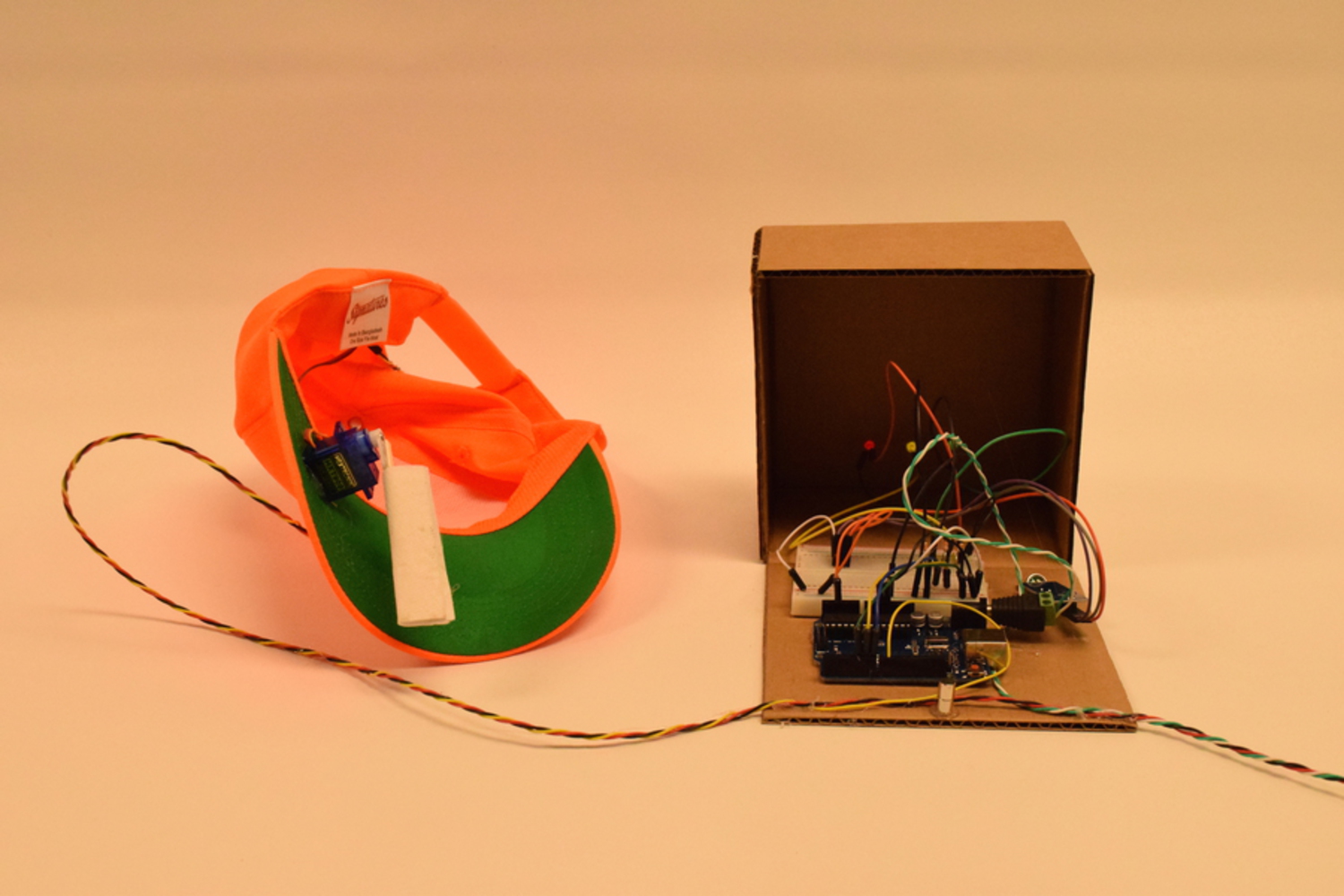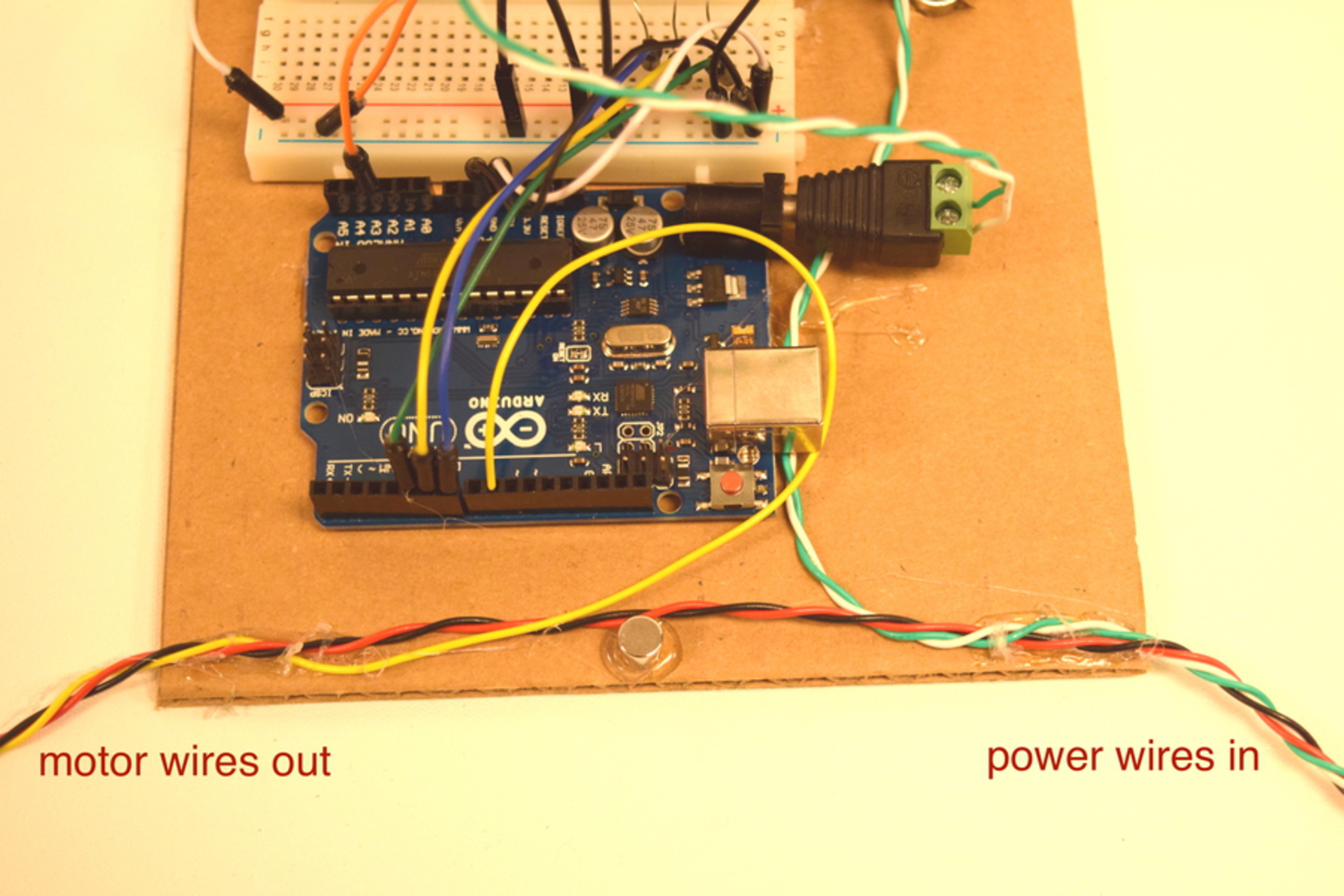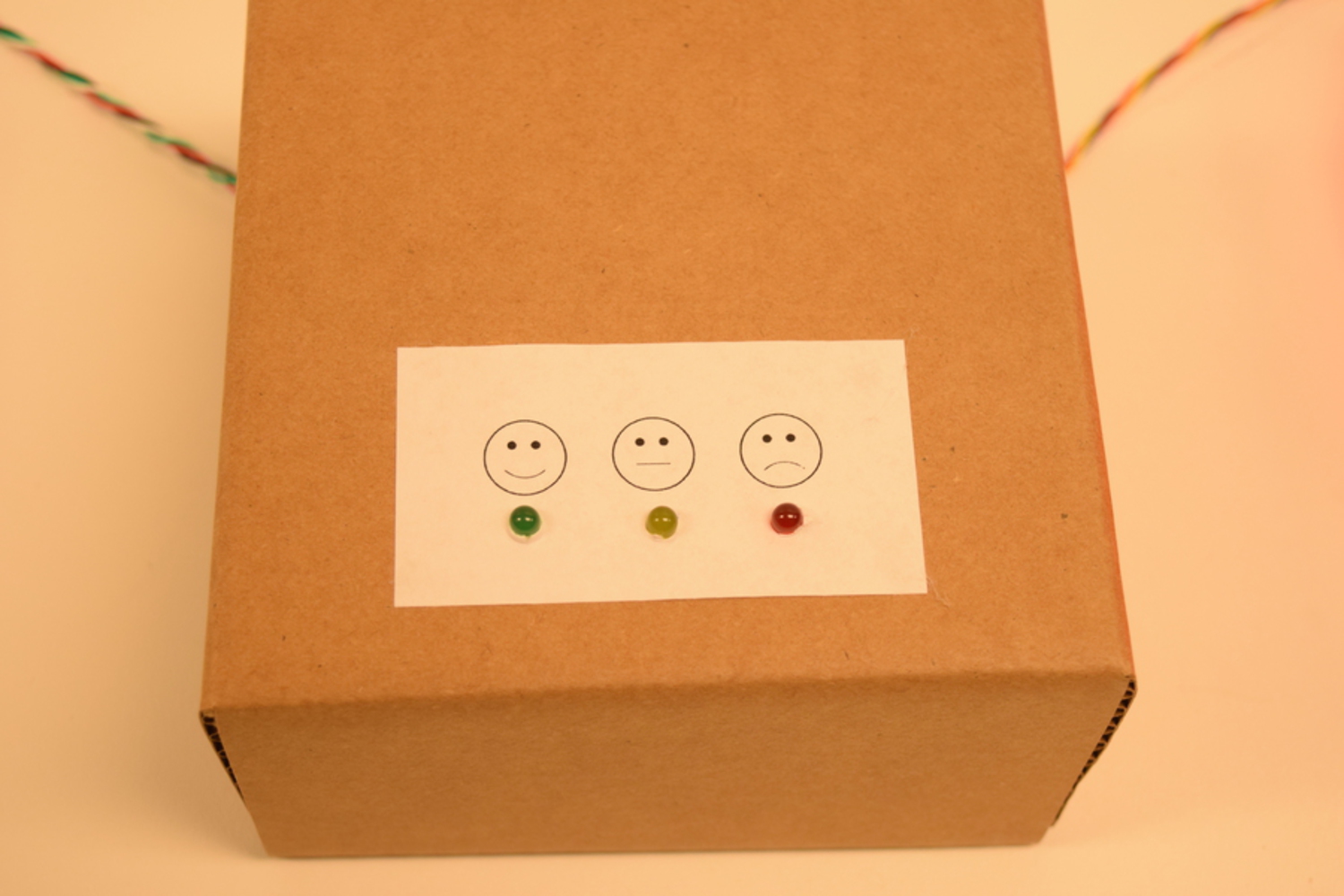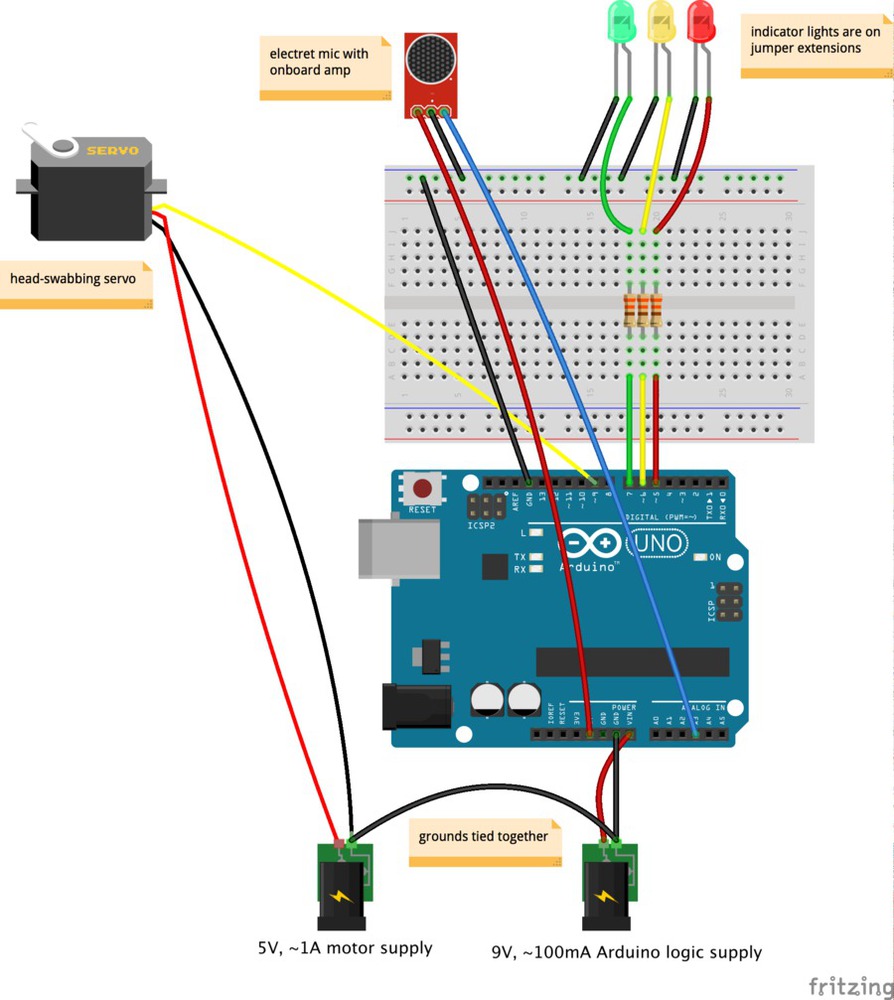The Destresser is a simple device, consisting of a mic/control unit and a specially adapted hat. It accompanies you while you work on homework, taxes, or whatever stressful things you might be doing at your desk. The Destresser listens for your stress by listening to how fast you tap on the desk. The Destresser doesn't judge. It's here to help.
If you’re tapping slowly, the Destresser shows a green light. You’re ok. A little tap here or there is natural. Don’t sweat it.
If you start tapping faster—at around what a musician would call an andante (“walking”) pace, the Destresser will notice that you’re sounding a little worried, and indicate with a yellow light that it’s starting to get concerned. Take a chill pill, friend. Maybe it's a good moment to rest your eyes. You can get through this.
But if you persist and start tapping very fast, the Destresser knows you’re really struggling and it wants to help. It does this, of course, by giving you a calm, reassuring touch in the form of a friendly dabbing of the forehead with a moist cloth. There's not much in the world that feels better than a well-timed forehead dabbing.
There, there. All is well. The Destresser is here to help.



